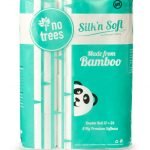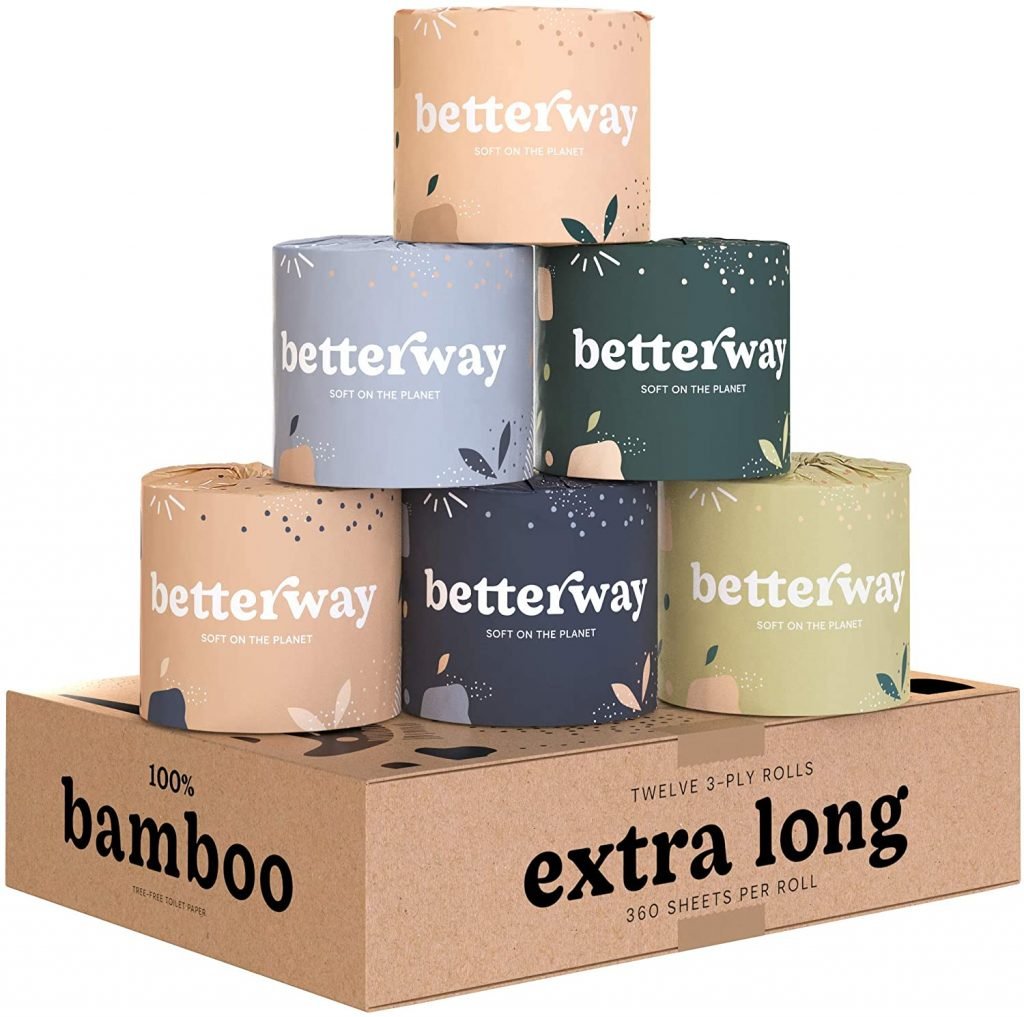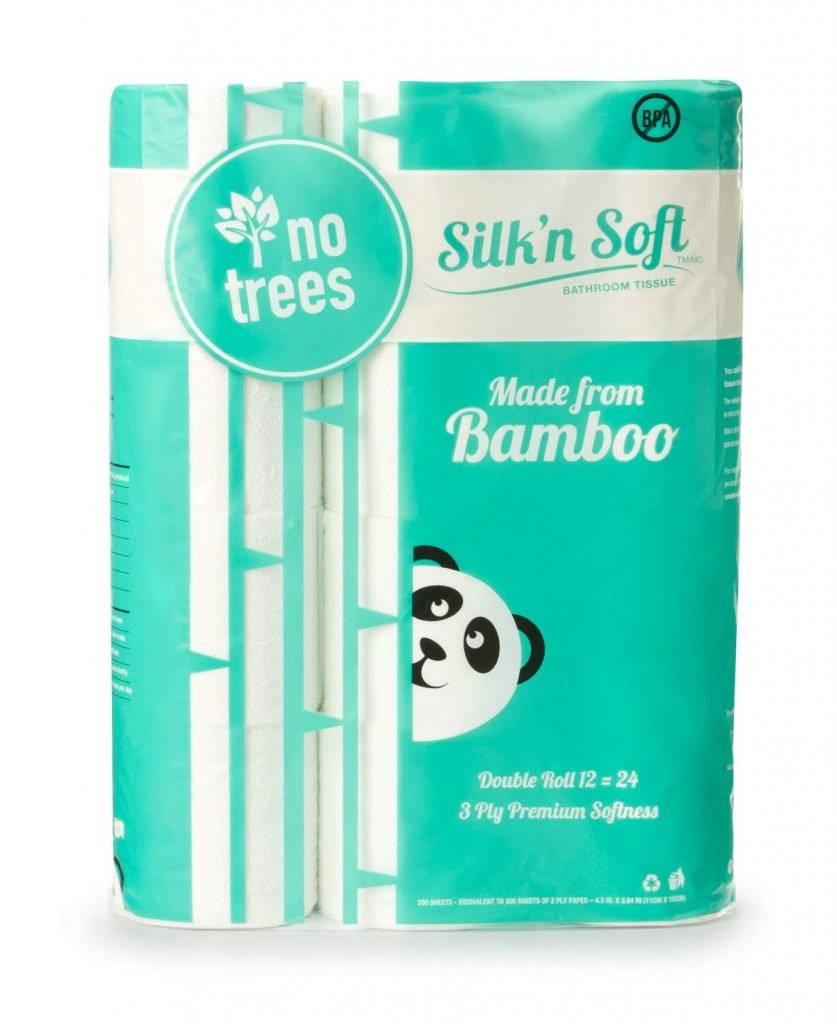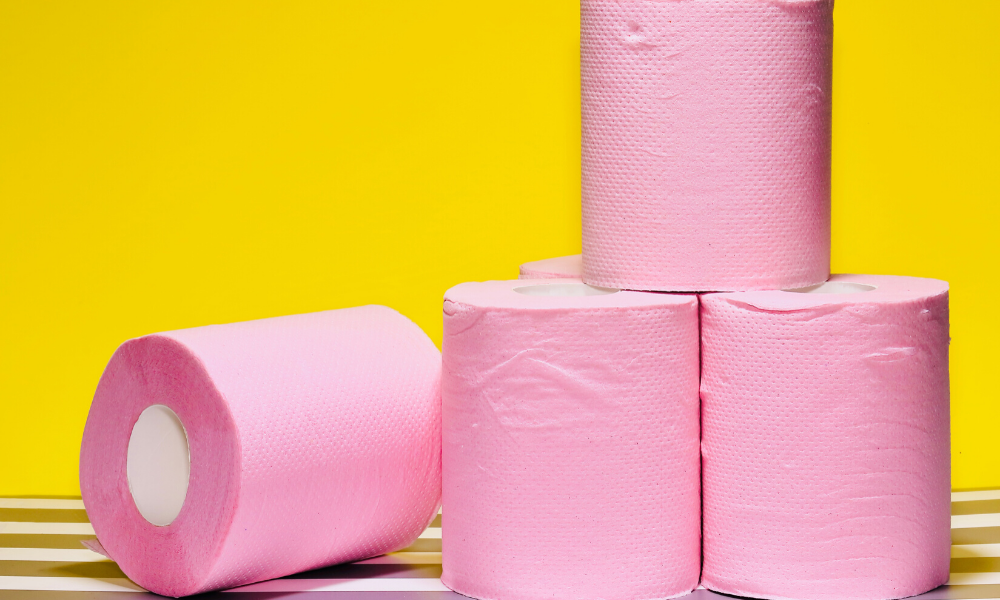Top 5 Eco-Friendly Bamboo Toilet Paper Reviews
1Shares
Bamboo toilet paper could be the answer to many of our considerable environmental issues when it comes to recycling, processing, and post-consumer disposal. You might be surprised to learn about the huge number of natural resources that people use daily.
So huge, to the point that it feels like we are flushing trees down the toilet. Wait, if we’re talking about toilet papers, then we’re exactly doing that!
Did you know:
The National Geographic estimated that a total of 27,000 trees are cut down daily to make toilet paper? That statistic was calculated 10 years ago. We don’t want to think about what it looks like now!
And since toilet papers came from resources that take more than 30 years to grow, they are one of the most environmentally harmful products available today! Fortunately, there are some things you can do to turn this around. For one, ditch the traditional toilet paper and go with eco-friendly bamboo toilet papers.
Yes! Eco-toilet paper is a thing!
And we’re not talking about something weird like wiping on leaves or moss. We’re talking about tree-free toilet paper like bamboo toilet paper, which you’ll have a hard time telling the difference from the standard Andrex.
In this article, we reviewed 5 of the best bamboo toilet paper available as well as a comprehensive buying guide on how to choose an eco-friendly bamboo toilet paper.
| BAMBOO TOILET PAPER | BRAND | EXPERT RATING | CHECK PRICE |
|---|---|---|---|
 |
ZHOO Unbleached Bamboo Toilet Paper |  |
Check Price |
 |
WHOLEROLL Organic Bamboo Toilet Paper |  |
Check Price |
 |
Betterway Bamboo Toilet Paper 3 PLY – Eco Friendly, Organic, |  |
Check Price |
 |
BIM BAM BOOHYPOALLERGENIC BAMBOO TOILET PAPER |  |
Check Price |
 |
SILK ‘N SOFT BAMBOO TOILET PAPER |  |
Check Price |
The Top 5 Best Eco-Friendly Bamboo Toilet Paper
WHOLEROLL Organic Bamboo Toilet Paper

WHOLE means “complete”, ROLL means “move forward” and this is what WHOLEROLL Inc. plans to do. They are a group of people who are earth-conscious and committed to reducing waste and offers a better solution for you and for the planet, by offering you organic tissues made from bamboo.
This tissue is made from virgin bamboo pulp without involving chlorine bleach, BPA, or any other harmful chemicals in its production process. Instead, it uses natural elements such as oxygen, and hydrogen peroxide to whiten the tissues.
The manufacturer is also FSC certifiedand promises responsibly sourced bamboo products from well-managed bamboo forests,
Each toilet paper hasa 3-ply thickness and 200 sheet counts with a texture that is super soft and comfortable to the touch. The toilet paper is also lint-free and allergen-free so it safe on sensitive and delicate skin. Not only that, WHOLEROLL claims that it is also forest-friendly, cruelty-free, and septic-safe, in order to prevent clogging in your tanks.
WHOLEROLL also features space-saving packaging that comes with 18 rolls or organic bamboo toilet paper. The packaging itself is a recyclable plastic material, offering you eco-friendly materials from the packaging to the product itself.
And it doesn’t stop there, WHOLEROLL also partnered with the Arbor Day Foundation, planting a tree for every package of WHOLEROLL organic bamboo toilet paper purchase.
Pros
- Thick 3-ply tissue
- Free from harmful chemicals
- FSC-certified
- Organic bamboo material
- Suitable for sensitive and delicate skins
- Recyclable plastic packaging
- Septic-safe
Cons
ZHOO Unbleached Bamboo Toilet Paper

Unlike the rest of the products in this review, the ZHOO bamboo toilet paper comes unbleached, meaning it retains its light brown color. And since there’s no chemical bleaching involved, this bamboo toilet paper is the best option for those with sensitive and delicate skin, especially for babies.
Zhoo uses 100 percent organic bamboo that requires no chemicals in order to grow strong and long. Thus, it is biodegradable and easily decomposes in nature. It is also free of paraben and artificial fragrance and is non-GMO certified. ZHOO claimed that their bamboo toilet paper 2 times more durable than the regular toilet paper, with its special design of 5.4 x 4 inches sheet size and an ultra-absorbency 4-ply structure so it uses fewer sheets to do the same job.
Not only that, but this bamboo toilet paper is also septic-safe and is 100 percent plastic-free. Instead of plastic, each roll is wrapped with moisture-proof paper and packaged with recycled cardboard boxes.
Pros
- Unbleached toilet paper suitable for those with sensitive skin
- Biodegradable and easily decomposes
- Thick and durable than regular toilet paper
- Septic-safe
- 100-percent plastic-free packaging
Cons
- Unnecessary multi-layer cardboard suitcase-like box packaging
- Each roll is wrapped in glossy and brightly-colored paper with a sticker which is not exactly sustainable or eco-friendly
- Some users reported that the 4-ply thickness causes clogs in the toilet
BETTERWAY ORGANIC BAMBOO TOILET PAPER

The bamboo toilet paper from Betterway features a plastic-free packaging and eco-friendly, organic bamboo materials. Its sustainable packaging features recycled cardboard boxes and cores and secured with a plastic-free tape.
The manufacturer puts a lot of effort into making these toilet papers not only eco-friendly but also super soft and comfortable to use. They even claim that this toilet paper is voted #1 softest bamboo toilet paper on Amazon.
Their 3-layer of premium lint-free bamboo toilet paper is guaranteed strong featuring neat-tear technology. Not only that, but it also has two times the absorption power of that regular toilet paper. Furthermore, it is also 2 times longer than your regular toilet paper having 360 sheets per roll than the average 200 sheets.
Suitable for those with extremely sensitive skin, this bamboo toilet paper is made from hypoallergenic, hand-picked organic bamboo. IT is also BPA-free and manufactured without dyes or artificial scents.
Pros
- 100 percent plastic-free
- Gentle on extremely sensitive skin
- Two times longer than regular toilet paper
- 3-ply strength
- Soft and comfortable to the touch
- Organic and hypoallergenic bamboo material
BIM BAM BOOHYPOALLERGENIC BAMBOO TOILET PAPER

The hypoallergenic bamboo toilet paper from Bim Bam Boois specially formulated to develop better health. This toilet paper is not only velvety soft, but it is also antimicrobial in nature. Meaning, you can wipe away any worries about irritation as well as removing harmful linty leave-behinds.
This bamboo toilet paper is made from 100 percent organic bamboo plant without the harsh chemicals and the nasty stuff. IT is completely free of BPA, chlorine-bleach, formaldehyde, and the itchy glues. Thus, it is suitable for those with extra sensitive skin for irritation and allergy relief.
This 2-ply, embossed toilet paper is also septic safe. It is tested for flushability and is 100 percent biodegradable for septic and sewer systems. You also get the money-back clog-free guarantee.
What’s more, Bim Bam Boo place each eco-friendly roll is individually wrapped in tissue paper and packed in fully recyclable or compostable packaging to further protect the environment.
Pros
- Pure 100 percent bamboo
- USDA certified
- Made without the harsh chemicals
- Suitable for sensitive skin
- 2-ply, embossed tissue paper that is lint-free
- Septic-safe with a money-back clog-free guarantee
- Plastic-free packaging
Cons
- Some customers complain that it clogs their plumbing
- Small rolls
SILK ‘N SOFT BAMBOO TOILET PAPER

Last but not the least, we have the bamboo toilet paper from Silk ‘n Soft. Although most tree-free or recycled toilet paper is often delicate and rough, the Silk ‘n Soft bamboo tissue paper exceeds the softness and comfort of the traditional toilet papers.
This 3-ply tissue paper is whitened using Elemental Chlorine Free or ECF process in their low-impact bio-fuel powered facilities. Furthermore, their bamboo source for this toilet paper is not extracted from regions in China inhabited by Pandas.
Each roll of the Silk ‘n Soft bamboo tissue paper is super soft and uniquely dependable and strong. Not only that, but it is also safe for septic systems, RV, and marine use. Furthermore, this bamboo toilet paper is also biodegradable and is completely suitable for those with sensitive skin since it is free of fragrance and BPA.
This tissue paper is equivalent to the 300-sheet standard tissue paper roll. Proudly made in Canada, Silk ‘n Soft claims to have the same size as the industry-standard double roll in the marketplace.
Pros
- Eco-friendly and biodegradable
- Safe for septic, RV and marine use
- 3-ply tissue that is strong and durable
- Super soft and comfortable to the touch
- Free of BPA and fragrance
- Voted 2013 by consumers
Cons
- Some customer complained about the thin layers
- Some customers complained of irritation and its scratchy and bumpy texture
How To Choose An Bamboo Toilet Paper

Despite its simple use, toilet paper options are seemingly endless and require a very intimate decision. More so, if we are talking about the eco-friendly ones! To make it easier for you, here are some points you need to consider when choosing the best eco-friendly toilet papers!
1) Tree-Free Materials
In terms of the materials used in an eco-friendly toilet paper, you got two options— bamboo toilet paper and recycled paper. Each has its own weaknesses and strengths, so it is good to be aware of their main differences before making a purchase.
- Recycled Paper: Resourceful but Rough
Probably the most eco-friendly tissue paper option material between the two, recycled papers use no new resources and make use of the materials that should otherwise go to waste.
Unfortunately, because of the inconsistencies in the paper that is used in addition to the process of turning the already-processed paper into further processed toilet papers, these toilet papers can feel a bit rougher on your bum or less soft than paper made from the virgin woods.
- Bamboo: Sustainable and Comfortable
Seems to be the material of the moment, bamboo is fast-growing, sustainable, requires no fertilizer or pesticides, and can be used in much the same ways as wood without a large ecological impact.
And because it comes from virgin material, a bamboo toilet paper is far softer and more comfortable than the average recycled paper. As a matter of fact, it would be hard for you to differentiate a bamboo toilet paper from the standard toilet paper you use at home.
2) Ply Count
In general, toilet papers ranges from 1 – 4 plies. Ply simply refers to the number of paper layers used. Generally, the higher the ply count, the stronger, softer, more absorbent, and thicker the tissue should be.
For the average need, a 2-ply bamboo toilet paper should be enough. But, if you are looking for an inexpensive option, then 1-ply toilet papers are your options while 3 – 4-ply toilet tissues offer you thicker and stronger toilet paper, that comes with a higher price tag.
3) Making Sense of The Eco Logos
Since we are talking about eco-friendly products, you will notice eco logos and certification on their packaging. Bear in mind that products without these certifications are just that— uncertified. Meaning they are not good and eco-friendly products at all.
This logo is a mark of environmental responsibility through every stage of the production process of the toilet paper.
Having this logo, the product proves to have a lower environmental impact compared to the standard products in the industry.
FSC is a non-profit, international organization that promotes responsible forest management by setting the standards on forest products with their certification process. You will find the FSC tree-tick logo on most eco-friendly toilet paper packs.
However, if you take a close look at the fine print, you will notice that there are actually 3 classifications on the label:
- FSC 100%: This means that all fiber or timber in the product comes from a forest that is FSC-certified.
- FSC recycled: This means that all fiber or timber in the product is recycled material, but 15 percent can be pre-consumer waste (the manufacturing scrap which has been put back to production). This is your best option for eco-friendly toilet papers.
- FSC mix: This means that the product can be a mixture of fiber or timber from a forest that is FSC-certified, fiber, or timber from other controlled substances or reclaimed fiber or timber. The entire production volume contains at least 70 percent FSC-certified material;however, it does not necessarily mean that the particular product line contains any FSC-certified material at all
Ultimately, the FSC logo is not a guarantee that the product is from a sustainable source. However, it does indicate that the virgin fibers used to make the product came from the forests that are managed to higher social and environmental standards.
PEFC, short for Program for the Endorsement of Forest Certification, is an international organization working to promote sustainable forest management and ensuring the timber and non-timber forest products are produced using high social, ethical and ecological standards.
PEFC has a 3rd party classification scheme and you can identify its products by the PEFC-certified label. It comes with 2 PEFC classifications:
- PEFC Recycled: This means that at least 70 percent of PEFC-certified material from recycled resources and wood from controlled sources.
- PEFC Certified: This means that at least 70 percent of wood comes from the PEFC-certified forests and woods from controlled sources.

4) Free From Harmful Chemicals
The trees are green and brown. So how come toilet papers are white?
Well, there are some pretty strong chemicals that are often employed to turn the greens and browns into soft white papers you use to wipe your bum.
Chemicals like chlorine, bleach, and BPA are usually found in tolls of toilet paper that are made from both trees and recycled papers. Such chemicals can be harmful not only to us but also to the environment. So, it is best to look for toilet papers that explicitly states it is made without them.
It is best that you look for a product that says unbleached or uses chlorine alternatives such as hydrogen peroxide or oxygen to achieve the whiteness.
5) Tube-Free Rolls
Most toilet paper will come wrapped around a cardboard tube, helping it retain its shape. However, when you think about it, these tubes are not totally necessary, so some manufacturers produce toilet papers without them.
And if you are focused on reducing waste even further, then a tube-free bamboo toilet paper might be something you’d look for. Just know that the paper might not smoothly unroll and can also look a bit messy as you get towards the end.
6) Septic Safe
Septic toilet? Then you should know better than getting a toilet paper that is not designed to break down in your septic system.
Still, for those who do not have septic toilets, it still makes sense to buy bamboo toilet paper that is septic-safe.
Why?
Well, for one, having a septic-safe toilet paper means that it can break down easily and help prevent pipe blockages, giving some peace of mind for those who live in older homes and buildings.
But, perhaps the most important reason is that septic-safe toilet papers break down quickly that they will not end up in landfills.
You see, even though all toilet papers are designed to break down long before it even reaches the solid waste filtration of the sanitation process, there are some bits that do not dissolve completely and end up contributing to landfill wastes.
7) Other Features
Features like printed, embossed, scented or quilted toilet papers are just all added for aesthetic and decorative appeal. Whether you choose to buy bamboo toilet papers with these features will come down to your personal preference.
In addition, if you have a sensitivity to perfumes or dyes, then it is important that you look for toilet papers without them and claims to be hypoallergenic.
Frequently Asked Questions

Does bamboo toilet paper block the drain?
Bamboo paper is a sustainable alternative to the typical tissue or cotton toilet paper. Made of 100% bamboo, it is biodegradable and sustainable. Even though it is made of natural fibers, does bamboo toilet paper block drains? The answer is no! Bamboo will not clog drains.
Because bamboo paper is naturally biodegradable, it dissolves as soon as it is flushed. Because of this, it is safe to flush and will not cause any obstructions in your drains. Additionally, the power of the flush will aid in shredding the toilet paper, making it more manageable for the tissue to travel through the plumbing and into the sewage system.
So, while the answer to the question “does bamboo toilet paper block drains?” is no, that doesn’t mean that you should begin stuffing reams and reams of bamboo tissue down your toilet, as doing so is not likely to be helpful. However, if it is used appropriately, there should be no issue.
Is bamboo toilet paper better for the environment?
Many people are skeptical about bamboo paper and wonder, is bamboo toilet paper better for the environment? Simply said, absolutely. To start, we need to examine why you would be concerned about your use of toilet paper’s environmental impact.
If you’re using conventional (un-bamboo) paper, two main issues make it more harmful to the environment:
- There is a lot more water wasted when it goes down the drain versus a single piece of wet tissue, and
- Many sheets of un-bamboo paper might be in landfills for over 500 years before decomposing.
Therefore, we can confidently answer the question, “is bamboo toilet paper better for the environment?”. It uses less water than traditional tissue because of how quickly it breaks down once flushed. And, unlike traditional toilet paper, bamboo fiber does not get caught in drains as quickly.
Is bamboo toilet paper better than other toilet paper?
Bamboo paper has been becoming more and less popular over the past few years. It has taken over for the original tissue paper you would use to dry yourself, but is bamboo toilet paper better? This answer is going to depend on your personal preference.
What feels better to one person may not feel as comfortable or pleasurable to another. It comes down to how sensitive your butt hole is. But when it comes to the question “is bamboo toilet paper better“ it can be argued that bamboo paper is better than the alternative because of its ability to break down faster.
Why is bamboo toilet paper so expensive?
Bamboo toilet paper is high-cost because it takes a lot of bamboos to make the product. Unfortunately, there are few bamboo product makers because bamboo is difficult to reach for harvesting and processing.
Yet, the difference between bamboo paper and traditional paper is enormous, so you might still need to be persuaded why is bamboo toilet paper so expensive. This product costs significantly more than traditional toilet paper because the average lifespan for bamboo sheets is six months. However, the quality makes up for the increased price in longevity.
For example, bamboo paper doesn’t clog drains, helps reduce water usage, and protects forests by using less virgin fiber in manufacturing. Therefore, the answer to the question “why is bamboo toilet paper so expensive” is simply because bamboo is an eco-friendly resource with many benefits over other types of toilet paper.
Are there any alternatives to toilet paper?
A: Yes, there are other alternatives to toilet paper you can use. One eco-friendly alternative you can try is traditional cloth toilet paper, also called family cloth. This is a piece of cloth that is used as toilet paper, only it is washable and does not get flushed away, so it is reusable.
Another efficient option than regular toilet water with a smaller environmental impact is using a bidet. Simply using water not only cuts down on toilet paper used but is actually more hygienic.
Read More:
- Plants that Bear Resemblance, to the Elegant Bamboos; Similarities, in Appearance
- How To Water Bamboo In Pots? Making Your Potted Plant Thrive
- Mastering the Best Time to Plant Bamboo for an Optimal Growth
- Sustainable Construction: Benefits of Bamboo As Building Material
- What Are The Different Ways To Use Bamboo In Interior Design?
Final Thoughts
So, there you have it!
When thinking about how to take steps in reducing your environmental impact, don’t just think about reducing your plastic use, composting your waste and scraps, or bringing reusable bags to the grocery store. Switching up your toilet paper can make a really huge difference!
1Shares
